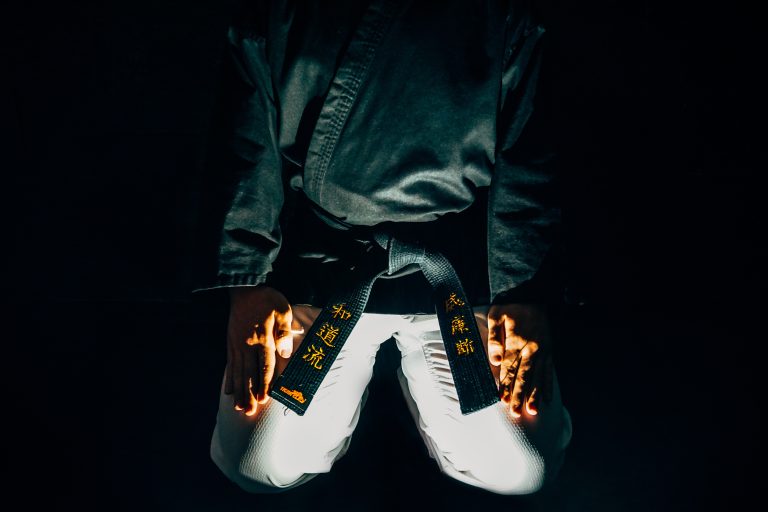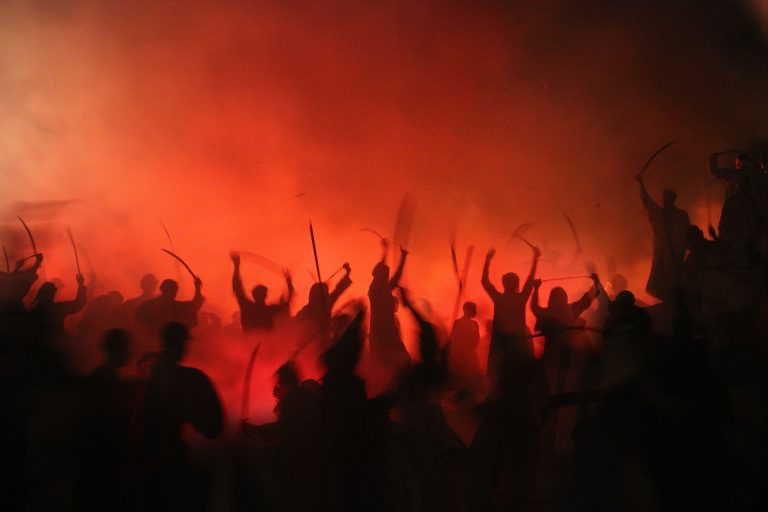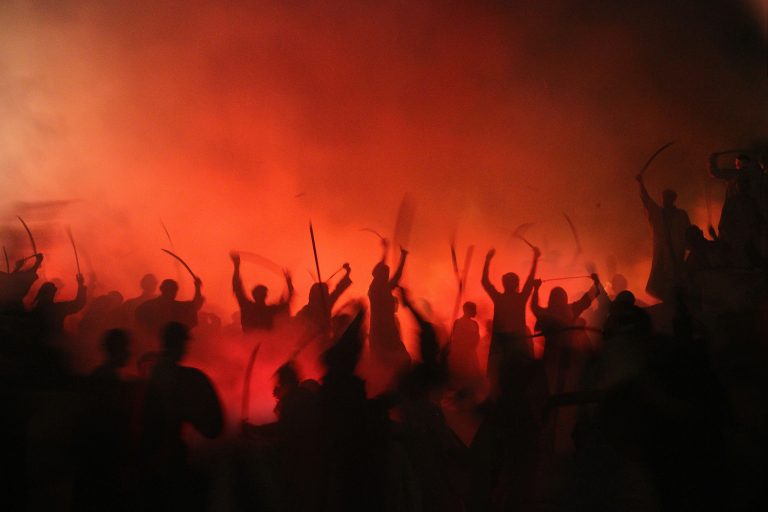What Color Karate Belts Are There: A Comprehensive Guide
If you’re new to karate or simply curious about the various belt colors you may have seen, you’re in the right place. Belts are a crucial part of the martial art, representing the progression of a student’s skills and knowledge. In this guide, we’ll help you understand what each belt color means, how to earn them, and what to expect during the grading process.
What is the Purpose of a Karate Belt?
Traditionally, white belts were the only color used in karate. Later on, a system of colored belts was introduced to represent the student’s progress from beginner to advanced practitioner. This progression includes learning more challenging techniques, attaining physical and mental fitness, and embracing the philosophy of karate.
Different schools and organizations may have varied interpretations of the karate belt system, but most follow the structure of the Kyu and Dan grades. Kyu grades are beg lve belts that are used to represent a beginner level of the martial art, while Dan grades signify black belts which are the highest levels achievable.
What Colors Do Karate Belts Come In?
While some schools may have variations in the colors, the most common karate belt colors are:
- White Belt
- Yellow Belt
- Orange Belt
- Green Belt
- Blue Belt
- Purple Belt
- Brown Belt
- Black Belt
What Do the Different Belt Colors Mean?
Each belt color has a specific meaning and represents a certain level of progress in karate.
White Belt
The white belt is the starting point for all karate students. It represents purity and innocence, starting with an open mind and a willingness to learn.
Yellow Belt
The yellow belt is the first belt a student earns. It symbolizes the beginning of the journey towards the next level of expertise. Students must master basic techniques, discipline, and self-control to earn this belt.
Orange Belt
The orange belt represents a student’s growth and awareness of their surroundings. It symbolizes the beginning stages of calibrating physical coordination with mental focus.
Green Belt
The green belt symbolizes a student’s growth towards maturity in their discipline. Students must show determination, adaptability, and fortitude in their learning path.
Blue Belt
The blue belt represents knowledge gathering and self-discovery. A student should be skilled in basic techniques, focus, and mental dexterity.
Purple Belt
The purple belt is about refinement of techniques and enhanced awareness of one’s surroundings. A student should also have developed mental and physical stamina and perseverance.
Brown Belt
The brown belt symbolizes a student’s mastery in the fundamental techniques of karate. Students at this level also show a deep commitment to the art, developing their physical and mental strength and stamina.
Black Belt
The black belt represents a student’s confidence and competence level in karate. Achieving black belt status requires years of hard work, dedication, and commitment. It symbolizes a significant milestone in the student’s martial arts journey because black belts are recognized as experts in karate.
How to Earn Karate Belts
In a traditional karate school, students earn belts through a rigorous grading process. The grading process evaluates a student’s knowledge of techniques, discipline, and understanding of karate philosophy.
The grading process usually includes a written test on the history and philosophy of karate, followed by a practical demonstration of various techniques, katas (a series of choreographed movements), and kumite (sparring).
To advance to the next level, students must first master the techniques within the previous level. The grading process helps students gain confidence and motivation to keep advancing in their martial arts journey.
What Color Karate Belts Are There?
Introduction
Karate is a martial art that is practiced all over the world. It is a way of life that teaches discipline, self-control, and respect. During the training, students are awarded different colored belts based on their level of expertise. These colored belts signify the rank that the students have achieved. There are various colors of belts in karate, and each signifies a different level of mastery.
In this blog post, we will answer the most frequent asked questions about the colors of karate belts, their meanings, and significance.
What is the order of karate belts by color?
The order of karate belts by color, from the lowest to the highest, is as follows:
1. White belt – It is the starting rank in karate. It symbolizes a beginner’s innocence and lack of knowledge.
2. Yellow belt – The yellow belt signifies that the student has acquired a basic understanding of the martial art.
3. Orange belt – The orange belt signifies that the student has improved his or her basic techniques and developed a stronger foundation in karate.
4. Green belt – The green belt represents growth and development. It signifies that the student has made progress and learned more advanced techniques.
5. Blue belt – The blue belt symbolizes the student’s continued progress and development. It represents the sky, which is unlimited and boundless.
6. Purple belt – The purple belt represents the student’s mastery of basic techniques and a deeper understanding of the martial art.
7. Brown belt – The brown belt stands for refinement and perfection of techniques, which takes time and dedication to achieve.
8. Black belt – The black belt signifies a high level of expertise in karate. It represents that the student has achieved a deep understanding of the martial art and its principles.
What is the meaning of karate belt colors?
Each color of the karate belt has a special meaning, and it represents the level of expertise achieved by the student. Although different schools may have slightly different meanings, the following are the general meaning of each color:
1. White – purity, innocence, and a beginner’s lack of knowledge.
2. Yellow – the seed is beginning to grow.
3. Orange – the energy is beginning to flow, and the student is gaining a strong foundation.
4. Green – growth and progress, the student is now able to branch out and learn more advanced techniques.
5. Blue – the sky is unlimited and boundless, represents that the student’s horizons are expanding.
6. Purple – the beginning stages of maturity, acquiring a deeper understanding of the martial art.
7. Brown – refinement and perfection of techniques, requires time and dedication to achieve.
8. Black – mastery and excellence, it represents that the student has attained the highest level of expertise.
Do all martial arts have the same belt color system?
No, different martial arts have different belt color systems. Some martial arts use a solid color system, which means that once a student is awarded a belt, it remains that color for the rest of their life. In contrast, karate uses a striped system on a belt, where students can earn stripes as they progress through the ranks. Additionally, some martial arts have belt color systems that consist of only a few colors, while others may have more.
What is a black stripe on a karate belt?
A black stripe on a karate belt signifies that the student has achieved a halfway point between two ranks. For example, if a student has a green belt with a black stripe, it means that they are halfway to earning their next rank, a blue belt.
What are the different color karate belts?
If you are new to the world of karate, it can be overwhelming to understand the various colors of belts worn by practitioners, each representing a different level of skill or rank. In this guide, we will explain the colors of karate belts, their significance, and the requirements necessary to achieve each level.
White Belt
The white belt is the starting point for all students practicing karate. It represents a blank slate, signifying that the practitioner is new to the art and has yet to learn the basic techniques, stances, and forms. The white belt is symbolic of the beginning of the journey towards understanding and mastering karate.
Yellow Belt
The yellow belt is the first level of rank in karate. It is awarded to students who have achieved basic proficiency in the fundamental movements and techniques of karate. Students at this level learn basic sparring and self-defense techniques, as well as basic forms such as Taikyoku Shodan.
Orange Belt
The orange belt signifies that a student has developed a deeper understanding of karate and has acquired more skills and knowledge than students with a yellow belt. At this stage, practitioners focus on refining their techniques and developing more advanced strategies. They learn more complex forms such as Heian Shodan, and begin to understand the application of techniques in sparring.
Green Belt
The green belt represents a higher level of technical proficiency and is usually awarded to students who have trained in karate for over a year. At this level, practitioners gain a greater understanding of kata, which are formal exercises involving a series of movements and techniques. They also learn more advanced self-defense techniques and begin to understand the principles of kumite, or free sparring.
Blue Belt
The blue belt is a significant advancement from the green belt and is awarded to students who have demonstrated a high level of skill and dedication. At this level, practitioners focus on advanced forms such as Jion and Hangetsu, and begin to incorporate more complex techniques and strategies into their sparring. Blue belts are considered to be intermediate-level students.
Purple Belt
The purple belt indicates that a student has mastered the fundamentals of karate and is considered an advanced level practitioner. At this stage, students have a deeper understanding of forms, techniques, and principles, and can apply them to more advanced and challenging situations. This level of proficiency requires several years of training and practice.
Brown Belt
The brown belt is the second-highest rank in karate and represents a high level of mastery. Students at this level begin to hone their skills and develop their own style of karate. They focus on advanced forms such as Bassai Dai and Kanku Dai, and learn more intricate techniques to increase their effectiveness in sparring.
Black Belt
The black belt is the highest rank in karate and represents a culmination of years of training, discipline, and dedication. It is a symbol of mastery and is awarded to only the most dedicated and accomplished practitioners. At this level, students have a deep understanding of karate and its principles, and can apply them to any situation. A black belt is not the end of the journey, but rather the beginning of a new chapter in the pursuit of self-improvement and mastery.
Conclusion
Karate belts represent different levels of proficiency and mastery, and can be a great source of motivation and accomplishment for those who practice the art. However, it is important to remember that karate is not just about achieving a certain level of rank, but about the journey of self-improvement and dedication to a lifelong pursuit of mastery. Whether you are a white belt just starting out, or a black belt with years of experience, the journey of karate is never-ending and always rewarding.
Inhaltsverzeichnis






